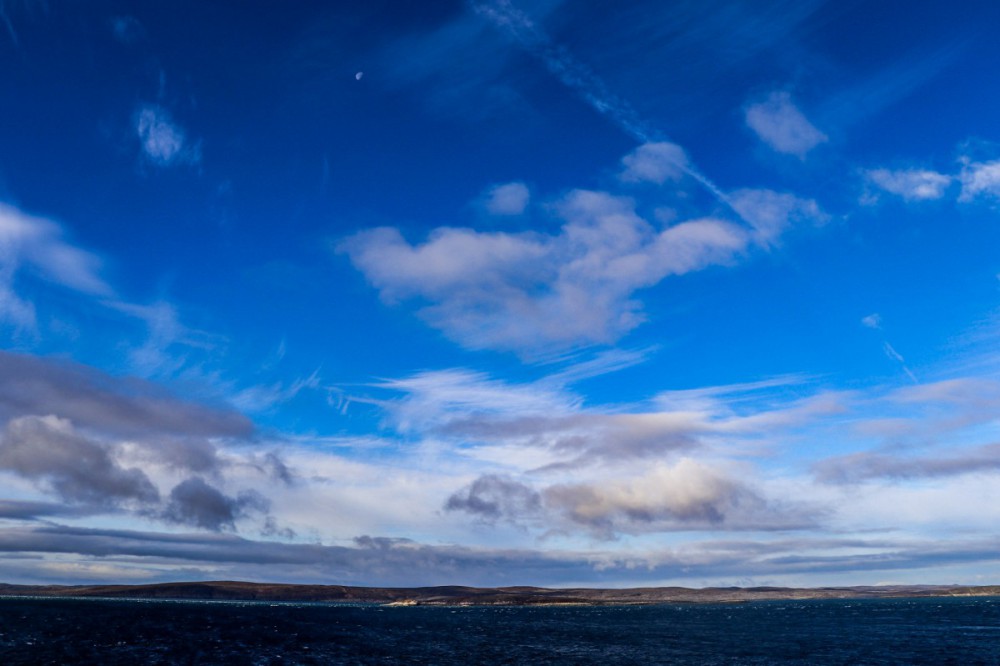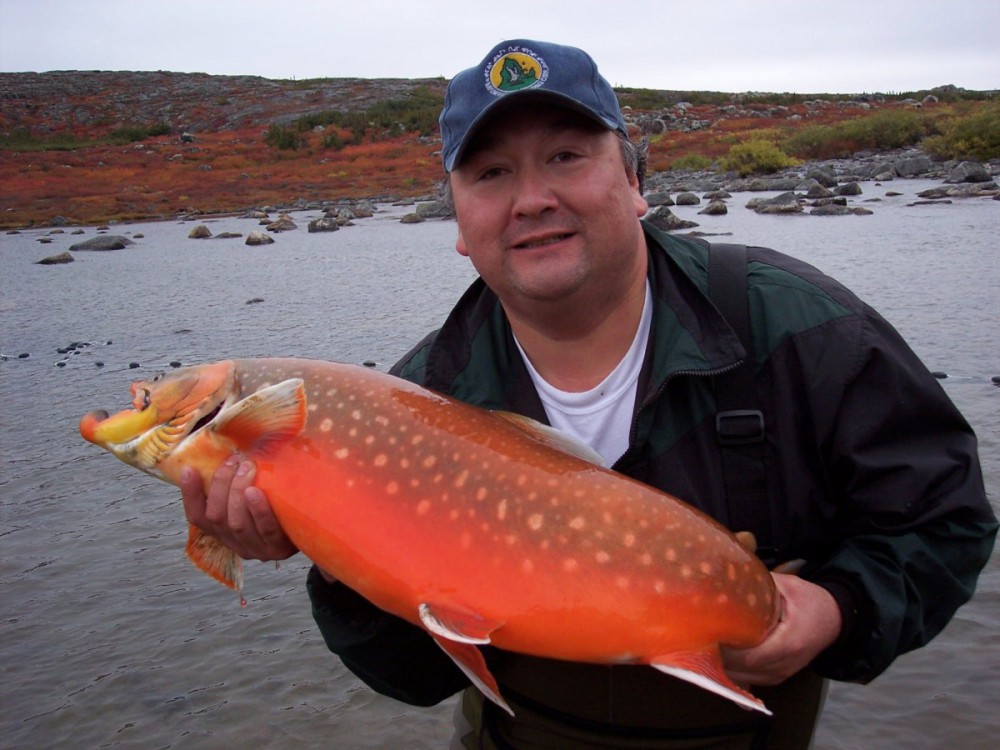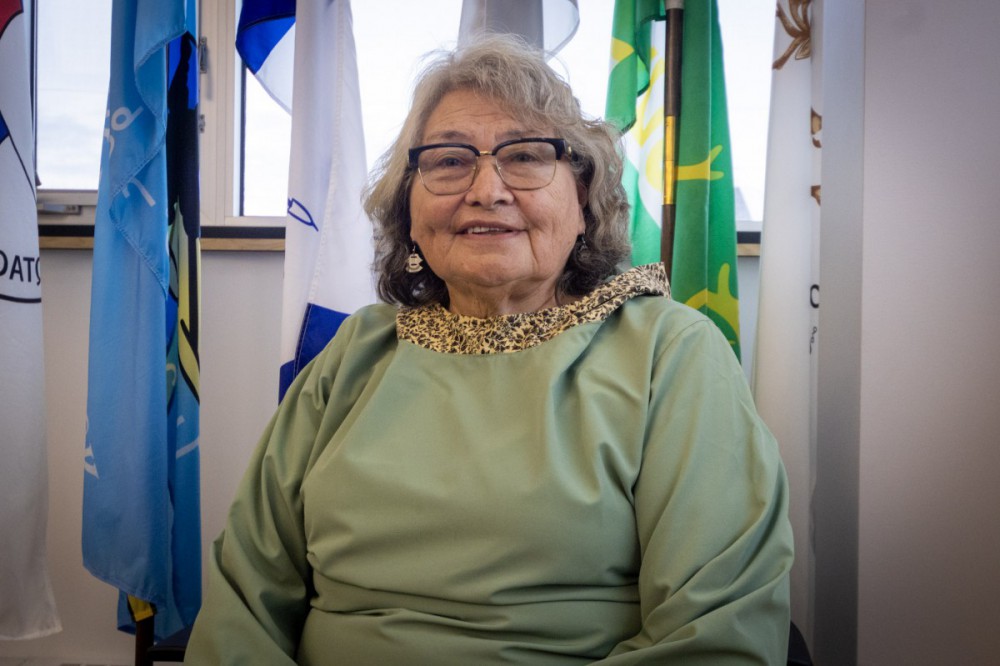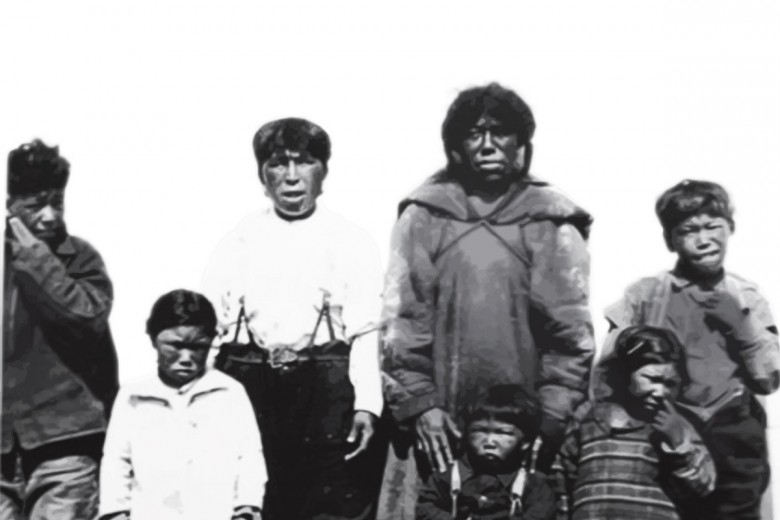The last day we are all together is a quiet one. It is late October along the coast of Newfoundland and Labrador. The Torngat Mountains are around us, Ungava Bay firmly behind, and the captain of the Canadian Coast Guard Ship (CCGS) Amundsen has just announced we will be arriving in Quebec City, the icebreaker’s final destination, a day early.
After five days together on the ground in Kuujjuaq, Nunavik and eight aboard the Amundsen, the 26 students and professors who have come together for the International Graduate School on the Emergence of Innovative Blue Economies in the Arctic seem simultaneously eager to be onshore and reluctant to leave the vessel and their newfound community.
Philippe Archambault understands these feelings and addresses both sentiments, reminding the group that learning about Inuit knowledge is a necessary first step in finding the gaps in scientific research and data collection across the region.
“The blue economy often involves competing interests, such as conservation efforts versus commercial exploitation,” he says.
Ungava Bay separates Nunavik in northern Quebec from Baffin Island, which is part of Nunavut. The bay is surrounded by numerous Inuit villages, the largest of which is Kuujjuaq, at the mouth of the Koksoak River. Photo by Meral Jamal.
Together with Gérard Duhaime, a sociology professor at Université Laval who co-developed this school, Archambault invites the team to a sharing circle in the officer’s lounge that afternoon. The hope is to encourage them to think deeply and holistically – beyond their specific, often narrow disciplines – about their time together.
“I was absolutely certain that by meeting Nunavimmiut, students will have to see the connection between, for instance, water nutrients and fishing, hunting, sharing harvests, and good health and good spirit,” he says.
Thinking critically about a “blue” economy
By taking students to Nunavik, Duhaime says he wants them to better understand and learn from Inuit who have been managing their own ocean resources ethically and effectively long before the term “blue economy” was coined and long before researchers like himself began studying the region.
He also wants them to challenge the concept of a “blue economy” itself, because in the North and across the Arctic, the idea is being promoted “as a way to invite business people to improve their practices, to avoid creating inequalities […] the reality is not the same thing.”
The adoption of the term “blue economy” is fairly new; it was conceived a little over a decade ago at the United Nations Conference on Sustainable Development in Brazil in 2012. Since then, the UN has also announced the UN Decade of Ocean Science for Sustainable Development (2021–2030), seeking “to stimulate ocean science and knowledge generation to reverse the decline of the state of the ocean system and catalyse new opportunities for sustainable development of this massive marine ecosystem.”
Governance in a global blue economy
This growing interest in the blue economy and blue growth in coastal communities, many of them Indigenous communities, masks ongoing social, political, and historical issues and is of concern for many researchers.
“[Ocean management] is not a new thing – for decades Inuit have been saying ‘We know how to manage the resources ourselves. We know the animals. We know how much we can take and when, and when people among us take more, then they can distribute it,’” he says.
An article on marine policy entitled “Enabling Indigenous innovations to re-centre social licence to operate in the Blue Economy” notes “increasing economic activity in coastal areas and seas [...] creates opportunities and poses potential environmental and social risks and inequities, particularly relating to coastal communities and Indigenous societies.” In Canada, this has meant reduced opportunities for wild fishing, thus diminishing Indigenous communities’ ability to pass their cultural activities to successive generations; a tension between First Nations’ collective ownership and that of private companies; and government policies that have historically led to a loss of Indigenous communities’ access to resources. Consequently, this has fostered generalized distrust of government among First Nations and risks to culture and territorial sovereignty, particularly in the context of unresolved land claims, which are among the primary objections to aquaculture development in communities. An inclusive, sustainable, and equitable strategy, the article argues, includes Indigenous resource ownership and a proper distribution of benefits.
Another research paper, looking at how the development of a capitalist blue economy in the Caribbean led to subsequent inequalities, points out that establishing the foundations for shared ocean systems and regional development “will require confronting and redressing colonial and postcolonial histories of systematic underdevelopment.”
As Duhaime notes, sustainable use of ocean resources is already compatible with the Inuit worldview. The challenge is connecting these resources to an economic model without further limiting the social agency of Inuit.
“[Ocean management] is not a new thing – for decades Inuit have been saying ‘We know how to manage the resources ourselves. We know the animals. We know how much we can take and when, and when people among us take more, then they can distribute it,’” he says.
Local solutions
A locally led and community-driven solution that has both connected Inuit in Kuujjuaq to the blue economy and ensured it is they who benefit first is the Napukaaliuvik Kuujjuaq fish hatchery.
Spearheaded by Allen Gordon, an Inuk historian and former president of the Nayumivik Landholding Corporation, the hatchery began in 1999 with the goal of increasing fish stocks in the Nepihjee River watershed near Kuujjuaq.
Allen Gordon, pictured with Arctic char. Since beginning the hatchery in 1999, Gordon says it has had an over 90 per cent success rate in the eggs hatching each year. Photo provided by Allen Gordon.
While char is available in communities around Nunavik, it had been inaccessible to Inuit through fishing in Kuujjuaq prior to the hatchery. Gordon began working 25 years ago to reintroduce a culturally significant fish for Inuit in a way that would benefit the community economically.
According to Gordon, the project built off the work of the late Geoffrey Power who was working with the federal government in the 1960s to address job scarcity for Inuit and find alternative means of economic development. The University of Waterloo professor was studying estuarine salmon in the region. Finding that the salmon would keep travelling down to the mouth of the river and back, he extended this research to char.
“[Geoffrey] wanted to survey streams where char go upriver because there's a lot of streams that float on Ungava Bay – he wanted to check to see if there were streams that had problems for char to go up,” Gordon said.
The team found trout and white fish were present but char were unable to migrate upstream due to a set of high rapids and waterfalls.
The solution was simple: using dynamite to clear two channels through solid rock that would create a path for the fish to travel through.
“You could just touch your fingers along the char’s belly and the eggs were just coming out.
Yet it took over two decades and Gordon becoming the president of Nayumivik Landholding Corporation to achieve this vision. Like many Inuit-led and Inuit-focused economic development projects, the lack of funding made it impossible for communities like Kuujjuaq to pursue important solutions immediately. According to Gordon, both the federal and provincial governments refused to fund the hatchery.
Once the path was cleared for char to travel upstream in the watershed, Gordon said the next step was boosting the char population for Inuit to be able to fish sustainably. Gordon began working with a commercial fisher from the Gaspésie region of Quebec who was creating char incubators in Kangiqsualujjuaq, another Nunavik community that already had access to the fish.
After finding a location for the incubator in an old water plant, Gordon got permission from the neighbouring village of Tasiujaq to collect 30,000 fish eggs from a spawning site in Finger Lake. Alongside his brother-in-law, he travelled to the community and using headlamps and dip nets, collected 5,000 eggs on the first night.
“You could just touch your fingers along the char’s belly and the eggs were just coming out.”
“We collected about 25,000 eggs the next night […] we brought the eggs back and that was our first batch at the new arctic char fish hatchery.”
In the time since, Gordon said the hatchery has had an over 90 per cent success rate in the eggs hatching each year. Inuit in the community have been able to enjoy fishing for char but the benefits have also gone beyond – younger generations have been introduced to the hatchery in school and through public visits, learning it’s possible to make a difference for their community while working independently.
“We started knocking on the doors of different federal departments, and even [the Quebec government] and the answer was always […] ‘We don't want to support hatcheries for overfishing,’” he said.
“We were trying to explain, this is not overfishing. We're creating a new char fishery for the village. The hatchery is to seed and enhance and speed up the introduction [of char for our community].”
‘[But] then we just said, the government won’t help us, we'll just do it locally. We've done it all locally [since].”
Breaking the silos in Northern research
Despite a global interest in and enthusiasm for local and global blue economies, Duhaime says it’s important to note the process of building any kind of economy or scaling up economic growth is far more challenging in the Canadian Arctic, especially in front-line communities like Kuujjuaq, where Inuit continue to fight colonialism and climate change.
Issues with housing, infrastructure, and education may seem recent but these communities were facing these challenges even 46 years ago, when Duhaime first arrived.
The blue economy field school was, in many ways, a crash course for the student researchers and mentors. It was the first time many were visiting Kuujjuaq and Nunavik, the first time they were working across disciplines, and the first time they were given the space to think deeply about the blue economy and its impacts on Indigenous community agency.
Participants met with local research partners that Duhaime has worked with, including Makivvik Corporation’s vice-president for the department of environment, wildlife and research Adamie Delisle Alaku; Kativik Regional Government chairperson Hilda Snowball; Nunavik Elders’ Committee member Martha Greig; and Kangiqsualujjuaq mayor Maggie Emudluk.
PhD student Samantha Farquhar is studying the relationship between commercial fishing and local food security in Kuujjuaq, and has already been speaking with Nunavimmiut about the interconnectedness of fisheries and access to safe, healthy, and nutritious food. What she’s found is “there’s two sides of the blue economy in Nunavik.”
“You have this traditional side in the sense that people have been utilizing resources for their benefit for thousands of years. And then you have the capitalist side, where you do have Makivvik, which is a development agency and they have tried a couple of different ventures [geared toward] commercial fisheries,” Farquhar says, noting that in her research she found the corporation has had two business ventures – a bioscience company and an ocean tourism company.
“Of course, the traditional side of the blue economy has been existing for thousands of years and so then there's the question of, well, can these two things actually integrate?”
“The blue economy is a political program, it’s an economic program, and it's an ideological program. It's a program to continue this system based on profit, based on economic growth. Yet we all know that economic growth is one of the basic problems that the environment is facing,” Duhaime says.
Questions still remain about the potential of a blue economy in Ungava Bay, one that benefits Nunavik Inuit and is built on their traditional knowledge and way of life instead of taking from it.
Farquhar said leaving with these questions may in fact speak to the success of the school in reflecting the complex realities that Nunavimmiut experience on the ground.
For Duhaime and Archambault, what matters most is challenging students’ perspectives and reshaping how they work to better serve Nunavimmiut.
“When you try to analyze a specific situation like in Nunavik, you have to be very humble when you know the reality [only] on the surface,” Duhaime said of this process, encouraging students to remember that the region is different from the rest of Quebec in being remote, facing a high cost of living, being inundated with businesses that send their profits down south, and being seen as separate from the rest of the province as well as the country in a larger sense.
“This housing crisis that you've heard about, all the other social problems that maybe you have heard about, all the public services that are not there is because each time [a community in Nunavik] needs a nurse, each time they need a truck or sewage, each time they need any infrastructure – they have to prepare a file, ask evidences, have a business plan, go down to Quebec City and see a deputy minister and sell the project,” Duhaime continues. “We can imagine that we will transform the economy for the best by adopting a blue policy, a green policy [or] green practices and blue practices but Inuit don't even have the basic services in the region.”
“The blue economy is a political program, it’s an economic program, and it's an ideological program. It's a program to continue this system based on profit, based on economic growth. Yet we all know that economic growth is one of the basic problems that the environment is facing,” Duhaime says.
“If profit stays at the centre of all action, then the situation will continue to worsen,” he adds.
Inuk elder and social worker Martha Greig, pictured here, urges students to think critically about the way they form research questions and collect data, especially in relation to the blue economy. This is important, she says, as Nunavimmiut seek greater independence and self-governance in their communities. Photo by Meral Jamal.
“We would appreciate to be asked ‘What research do you need to have done?’ instead of somebody just out of the blue wanting to research something that’s [not important] for us,” Greig says. “Nunavimmiut like to collaborate with everybody. But it also has to come back to us too.”


_1200_675_90_s_c1_.jpg)

_780_520_90_s_c1.jpg)
